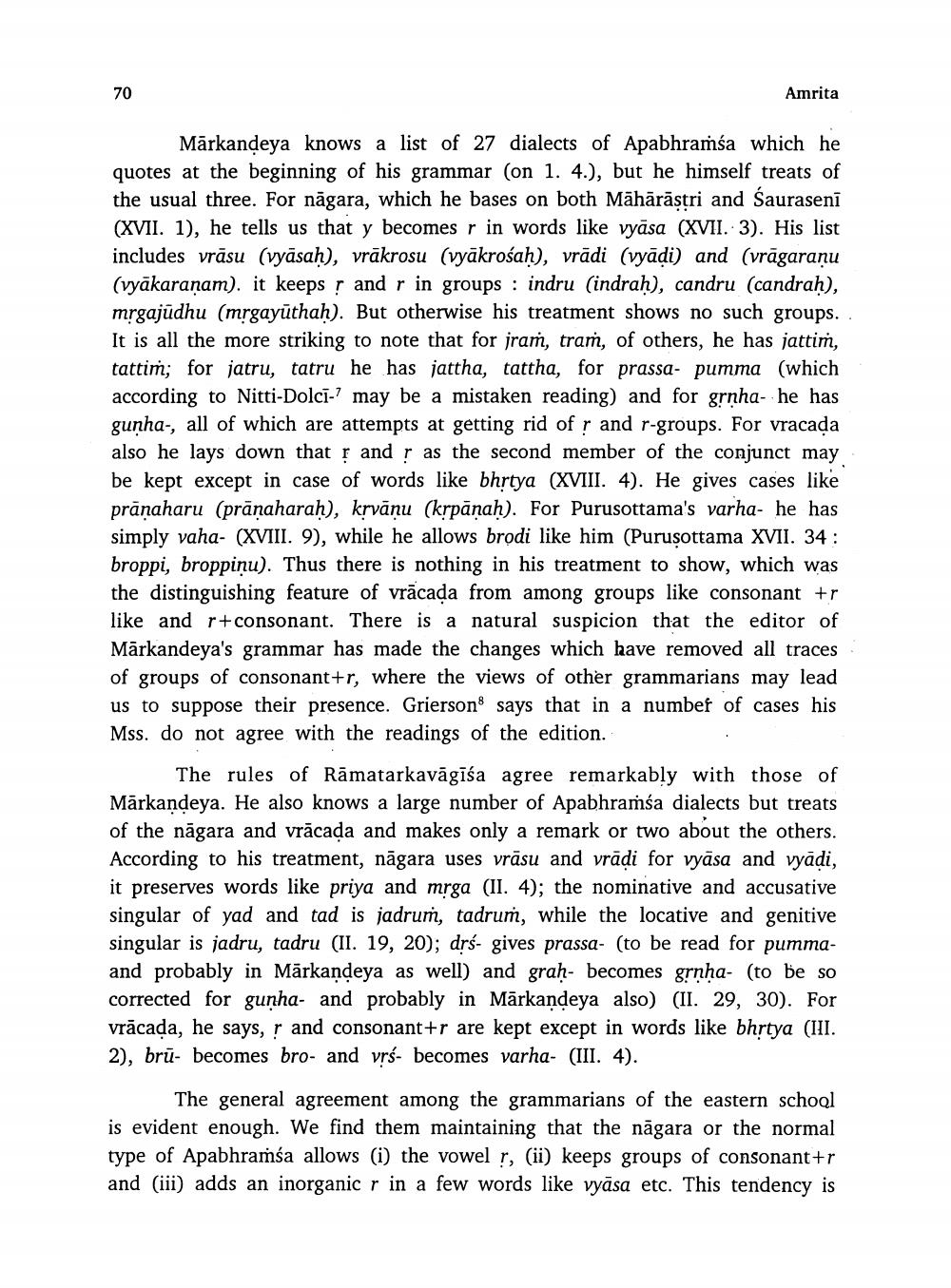________________
Amrita
Mārkandeya knows a list of 27 dialects of Apabhramśa which he quotes at the beginning of his grammar (on 1. 4.), but he himself treats of the usual three. For nāgara, which he bases on both Māhārāstri and Saurasenī (XVII. 1), he tells us that y becomes r in words like vyāsa (XVII. 3). His list includes vrāsu (vyāsah), vrākrosu (vyākrośah), vrādi (vyādi) and (vrāgaranu (vyākaranam). it keeps ? and r in groups : indru (indrah), candru (candrah), mrgajudhu (mrgayūthah). But otherwise his treatment shows no such groups. It is all the more striking to note that for jram, tram, of others, he has jattim, tattim; for jatru, tatru he has jattha, tattha, for prassa- pumma (which according to Nitti-Dolci-? may be a mistaken reading) and for grnha- he has gunha., all of which are attempts at getting rid of r and r-groups. For vracada also he lays down that ļ and ļ as the second member of the conjunct may be kept except in case of words like bhrtya (XVIII. 4). He gives cases like prānaharu (prānaharah), krvānu (krpanah). For Purusottama's varha- he has simply vaha- (XVIII. 9), while he allows brodi like him (Purusottama XVII. 34 : broppi, broppinu). Thus there is nothing in his treatment to show, which was the distinguishing feature of vrācada from among groups like consonant +r like and r+consonant. There is a natural suspicion that the editor of Mārkandeya's grammar has made the changes which have removed all traces of groups of consonant+r, where the views of other grammarians may lead us to suppose their presence. Grierson says that in a number of cases his Mss. do not agree with the readings of the edition.
The rules of Rāmatarkavāgisa agree remarkably with those of Mārkandeya. He also knows a large number of Apabhramsa dialects but treats of the nāgara and vrācada and makes only a remark or two about the others. According to his treatment, nāgara uses vrāsu and vrādi for vyāsa and vyādi, it preserves words like priya and mrga (II. 4); the nominative and accusative singular of yad and tad is jadrum, tadrum, while the locative and genitive singular is jadru, tadru (II. 19, 20); drs- gives prassa- (to be read for pummaand probably in Mārkandeya as well) and grah- becomes grnha- (to be so corrected for gunha- and probably in Mārkandeya also) (II. 29, 30). For vrācada, he says, ļ and consonant+r are kept except in words like bhrtya (III. 2), brū- becomes bro- and vrs- becomes varha- (III. 4).
The general agreement among the grammarians of the eastern school is evident enough. We find them maintaining that the nāgara or the normal type of Apabhramsa allows (i) the vowel r, (ii) keeps groups of consonant+r and (iii) adds an inorganic r in a few words like vyāsa etc. This tendency is




